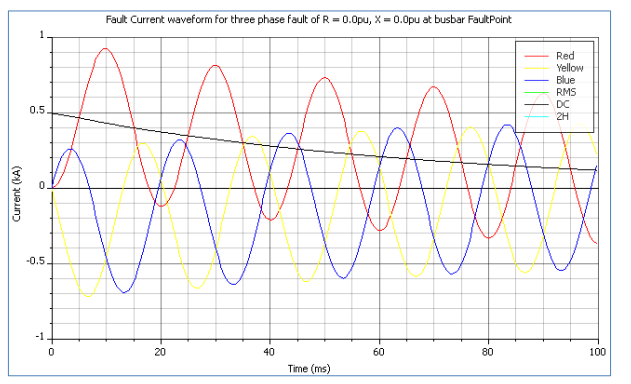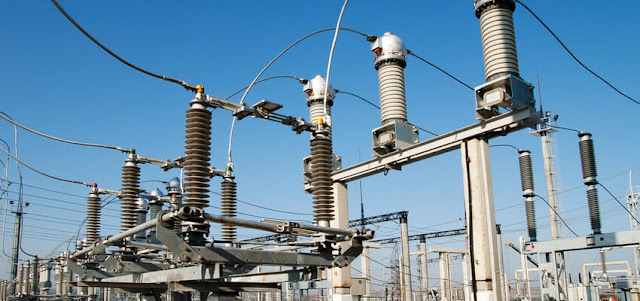Determining the protective devices for a power system and their settings usually put two competing goals against each other. On the one hand, you want the system available for use 100% of the time. To this
extreme end all power outages, whether due to
maintenance or failures, are to be avoided.
The Definition of Selectivity
A power system where these competing goals are in balance has “selectivity” as a characteristic.
What is “selectivity”? Complete selectivity means that the protective devices will minimize the effect of a short circuit or another undesirable event on the power system. The amount of the power system that must be shut down in response to the event is kept to the absolute minimum.
The Definition of Selectivity
A power system where these competing goals are in balance has “selectivity” as a characteristic.
What is “selectivity”? Complete selectivity means that the protective devices will minimize the effect of a short circuit or another undesirable event on the power system. The amount of the power system that must be shut down in response to the event is kept to the absolute minimum.
Related Article: What is Selective Coordination?
Rules of Selectivity
- The Use of Pickup Settings
- The Use of Delay Settings
The Use of Pickup Settings
The figure below shows how curves with different pickup values can be selected and illustrate the first rule of selectivity, which is, two devices are selective if the downstream device curve is located to the left of the upstream device curve.
 |
| Creating selectivity by proper
selection of pickup settings. |
Increasing the pickup setting shifts the curve toward the right of the graph. In the example, for any current up to the maximum fault current of the left-hand curve, the curve on the left will trip out before the curve on the right. Currents that exceed the maximum current of the left-hand curve are not physically possible and are sensed only by the device represented by the right-hand curve.
The Use of Delay Settings
The figure below shows how varying time delays can provide selectivity.
 |
| Creating selectivity by proper
selection of delay settings. |
Increasing the time delay shifts the curve upwards on the graph. Note that for all currents within
the range of the curves, the curve on the bottom will
trip out before the cure above it. So the second rule of
selectivity is that the downstream device must be
placed lower on the graph than the upstream device
for the two devices to operate selectively.
Putting It All Together
Determining the selectivity of a set of time-current curves is quite easy. The curves should line up in from the left to
right or bottom to top in the sequence of load to source.
There should be no overlapping of the curves nor should
they cross each other. There should be sufficient space
separation between the curves (more on this later). The
curves can also indicate whether upstream devices
provide backup protection. This occurs when the leftmost portion of the backup device extends over into the
range of currents of the preferred device.
 |
| Identifying complete
selectivity |
Identifying Selectivity of Fuses and Low Voltage Circuit
Breakers
The evaluation of selectivity among low voltage devices is straightforward once you understand the limits that the curves define. Most low voltage device
time characteristics are shown as a band.
 |
| Overcurrent device curves
with minimum and maximum clearing
times |
The left-most barrier may be referred to in several different ways. In fuses, this limit is called the minimum melt time and is the point at which the fusible element begins to melt. With circuit breakers, this limit
maybe expressed as either the “Maximum Resettable
Delay” or the “Minimum Total Clearing Time.”
- The
“Maximum Resettable Delay” is the maximum time that a given current may persist without causing the breaker to trip. A current can persist right up to the time defined by the curve with the assurance that the breaker will not trip.
- The “Minimum Total
Clearing Time” is the minimum amount of time that can be expected to clear the fault. It should be understood that at some time prior to this, the circuit breaker mechanism had been committed toward isolating the current. The time for the mechanism to operate and extinguish the arc inside the breaker has to occur before the minimum total clearing time. A time margin must be allowed
to account for this time.
Selectivity and Overcurrent Relays
Protective relay curves cannot be used in the same way as low voltage circuit breaker curves or fuse curves. The protective relay curve only represents the action of a calibrated relay. It doesn’t account for the
actions of the associated circuit breaker or the
accuracy of the current transformers that connect the
relay to the circuit that it is monitoring.
The curve represents the ideal operation of the relay. The
manufacturing tolerances are not reflected in the
curve. To coordinate an overcurrent relay with other
protective devices, a minimum time margin must exist
between the curves.
 |
| Recommended relay time
margins |
Using time-current curves as a graphical technique to illustrate selective coordination makes it easy to demonstrate whether or not selectivity has been obtained by the device settings and whether they adequately protect the distribution equipment. Once you become accustomed to
reading these curves the system evaluation can be done quickly.
Reference:
Title: Power System Selectivity: The Basics Of Protective Coordination
Author: Gary H. Fox, PE, GE Specification Engineer
Publisher: General Electric







.webp)











No comments: